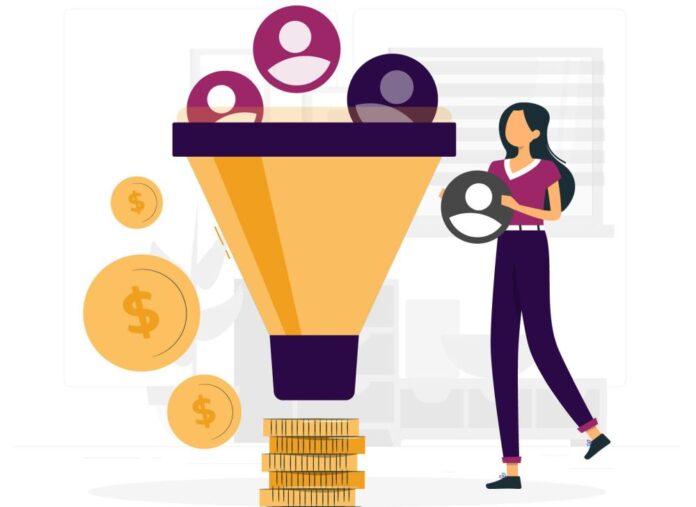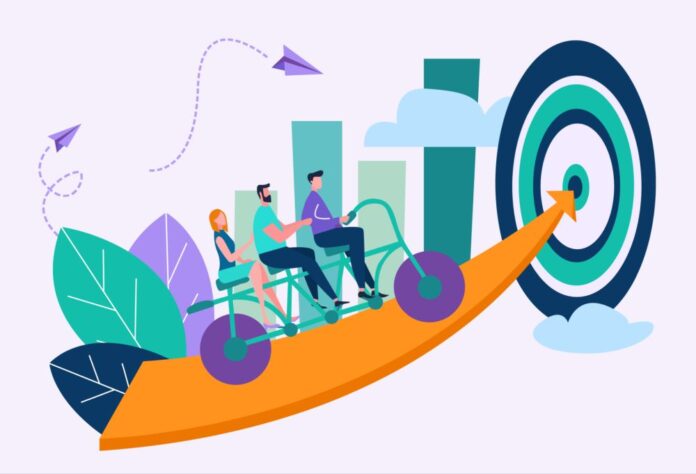When you’re pursuing revenue growth, acquiring leads is only one part of the sales equation. If you don’t successfully convert prospects into paying customers, your lead-acquiring efforts won’t generate a return.
To effectively boost sales and improve your marketing ROI, here’s how you can enhance your lead conversion process.
Set Lead Conversion Goals
A lead conversion rate generally indicates the percentage of prospects you’re able to successfully convert into paying customers within a specified time.
By assigning measurable goals for this, you’re providing your sales team with clarity in what they need to pursue.
Setting ambitious targets is always better to inspire your sales reps. However, ensure they’re achievable and realistic to prevent demotivation.
Once the goals are defined, prepare a plan with strategies and timelines to initiate consistent and focused actions to boost conversions.

Understand Your Customers’ Needs
What problems are your potential customers trying to solve? Which challenges do they face? What could help ease their pain points?
To find answers to these questions, you need data. The more information you have about prospects, the more accurate decisions you can make.
Contact forms and cookies are important methods many businesses rely on to collect data. You can use other sophisticated techniques, too.
Leadar, for instance, can help find qualified leads by providing verified and up-to-date information about a prospect’s age, geographic location, education, inferred salary, work background, and a variety of other useful aspects. It can also help you learn more about your existing leads to segment them better.
Invest in a Reliable CRM Solution
CRM software allows you to organize and manage your prospect data on a single platform, enabling you to eliminate the errors and inefficiencies that arise in manual data handling.
It lets you analyze large volumes of data with ease and accuracy to segment customers, assess engagement, track prospect behavior, and identify trends.
In addition, by using credible data insights generated by a CRM, your sales reps can map the customer journey, prioritize high-quality prospects, track leads through the sales funnel, increase conversion efficacy, and gain significant cost benefits.
These solutions can also generate real-time reports, leveraging various data visualization techniques. Overall, they can let you make informed decisions, forecast sales with greater precision, and improve your overall marketing ROI.
However, invest in a system that can automate your data-capturing mechanisms to make data collection and feeding effortless. It should allow you to integrate other critical software in your tech stack as well.
Scalability is another essential factor to consider so your CRM platform can adapt to changing needs and expand as your business grows.

Implement a Lead Scoring System
Lead scoring is the practice of prioritizing your leads based on the likelihood of them progressing through the sales funnel and becoming paid customers.
Remember, not everyone who shows an interest in your business, makes an inquiry, visits your website, or subscribes to your newsletter would purchase your product.
For instance, an employee of a competitor could browse your website and product catalog to learn more about your organization. Or, someone could research your product category for academic purposes. Ultimately, none of these individuals can be classified as a prospective lead.
You could often identify them after one or two interactions. For instance, you can determine disinterest when a lead unsubscribes from your mailing list. This allows you to remove them from your prospect lists and filter qualified contacts.
Sometimes, you can ascertain unqualified leads by collecting more data about their age, location, education, disposable income, lifestyle, and various other demographic and psychographic factors. A CRM platform would be invaluable for this.
Once you have enough data, you can apply a weightage system based on pre-determined criteria to rank leads. By focusing on prospects with a higher ranking, your sales reps can boost conversions while saving time and money.
Lead scoring also allows you to build an effective sales pipeline for the future. For instance, you might identify a lead who wouldn’t purchase from you at this moment due to budget constraints. You can pursue such prospects later during a promotion or when you’re ready to introduce a new product at a lower price point.
Customize Communications
One of the notable benefits of a CRM system is its ability to segment customers with greater accuracy. As a result, you can design tailored communications.
Why is this important? Hyper-personalization allows you to create more impactful engagement, influence prospect behaviors, and build stronger connections—all critical factors for improving conversions.
The effectiveness of customized communications is proven time and time again by marketing research. It’s shown to improve revenue by 5% to 15% and the return on marketing investments by 10% to 30%.
There is a reason for this. Tailored messages that address specific concerns of prospects can better equip them to make a purchasing decision. This allows you to move them through the customer buying journey faster.
In addition, you can boost conversions by making more precise product recommendations, reminding leads of their shopping carts, offering the right incentives at the right time, and providing a nudge when prospects are more inclined to purchase.

Don’t Hesitate to Follow Up
Many salespeople are reluctant to follow up out of fear of rejection. But, regular communication with a prospect is imperative for keeping your brand on top of their minds when they’re ready to make a purchasing decision.
It also allows you to understand their concerns, address objections, and make them feel valued, heard, and important.
For instance, if your product involves a substantial investment, a prospect could take more time to evaluate their options. When you know this, you can share customer reviews, testimonials, and case studies during follow-up communication to help them make an informed decision.
To Conclude
Data is the most important resource you have at hand to enhance your conversion process. So, pay close attention to collecting accurate information and gaining real-time insights that could improve your decisions.
Moreover, focus on generating high-quality leads and regularly monitor the sales pipeline to take timely action. And remember, your lead conversion process might require adjustments from time to time. So, evaluate and rework it as necessary.
